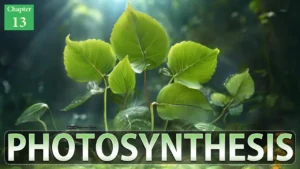Table of Contents
Urochordata General Characteristics, Classification and Examples
After reading this article you will learn about Urochordata General Characteristics, Classification and Examples
Urochordata General Characteristics
- All members are marine, free swimming or attached with rocks
- Adults are fixed but larva is free swimming
- All the adult members have test over their body, made up of heteropolysaccharide substance called tunicin so these animals are also called tunicates
- Notochord is found only in tail of larva which is lost during metamorphosis. Since chordate characters are found only in the tail region of larva so the name Urochordata was given to this subphylum
- Only one chordate character is found in adults i.e. Pharyngeal gill clefts
- Circulation is open type, heart is situated at ventral surface of body
- Excretion is by pyloric gland and nephrocytes
- Most of the animals are bisexual
- Fertilisation is external and mostly cross fertilisation
- Free swimming larva is found in this group called tadpole larva
- All the members of this subphylum show Retrogressive metamorphosis. During this metamorphosis a well developed free swimming larva is changed into less developed adult
Classification of Urochordata
Class 1. Ascidiacea
- Comprises mostly brightly coloured marine animals.
- Some species are solitary, others are colonial.
- Adults are sessile, but larvae are planktonic and do not feed.
- Adults having sac-like body, covered by tunic.
- Most of the chordate characters that were present during larval period disappear during metamorphosis into adult.
- In adult, nervous system transforms into a nerve ganglion.
- Examples: Ascidia, Ciona, Herdmania.
Class 2. Thaliacea
- These are free-living pelagic urochordates.
- The tunic is transparent and thin.
- They possess encircling circumferential bands of muscles within the walls of the test.
- Incurrent and ex-current siphons are present at opposite end of the body.
- A few pharyngeal gill slits are present.
- In the life-cycle polymorphism and clear alternation of generations are evident.
- Examples: Salpa, Doliolum.
Class 3. Larvacea
- These are tiny marine planktonic urochordates found worldwide.
- Larvacea received their name because the adults retain larval characteristics similar in some way to the ascidian tadpole with its tail and trunk. The general resemblance of adult larvaceans to ascidian tadpoles suggests that larvaceans may be neotenous form.
- They produce a remarkable feeding apparatus (house) that consists of three components: screens, filters and expanded gelatinous matrix. Disturbed or actively feeding larvaceans abandon their old house and builds a new one.
- The trunk holds major body organs.
- The tail is thin and flat.
- Muscle bands act on notochord to produce movement.
- A tubular nerve cord is present.
- All species, except one, are monoecious, and most of these are protandrous.
- Examples: Oikopleura, Appendicularia.
For more detailed information about Animal Kingdom, visit YouTube Channel.



![[PPT] The living world Class 11 Notes](https://rajusbiology.com/wp-content/uploads/2024/06/PPT-The-living-world-Class-11-Notes-300x169.webp)

2 thoughts on “Urochordata General Characteristics, Classification and Examples | Free Biology Notes”